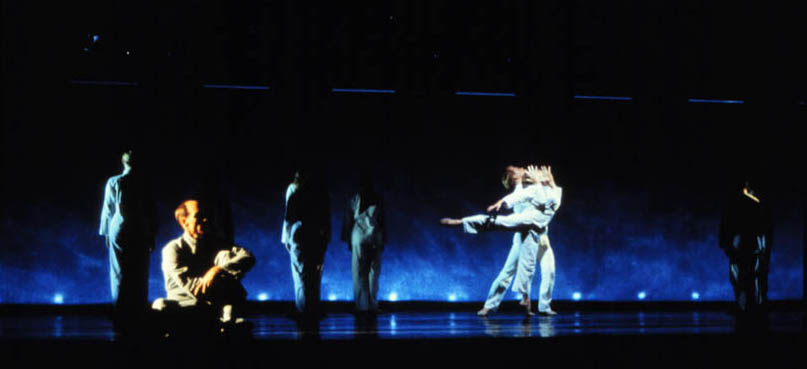 |
 |
 |
 |
 |
 |
 |
 |
 |
 |
 |
 |
|
|
|||||||||||||||
|
|
|||||||||||||||
|
|||||||||||||||
|
|
|||||||||||||||
Graduate Lighting Design
- THEA548B
________________________________________
Professor: David Jacques
Office Telephone: 985-4044
Office Hours: Monday 10:00 -12:00, Wednesday 10:00-12:00
Class Times: Thursday 8:00-12:00
E-Mail: djacques@csulb.edu
Web Page: http://www.csulb.edu/~djacques/
Course Objective:
Continued study in the art of lighting design. The sequence of graduate lighting
design courses: THEA 548A, 548B, 648A, 648B, 649A and 649B are taken in and out
of sequence depending on what year the incoming graduate student enters the program.
In all cases, these courses are graduate seminar courses that focus on learning
lighting design techniques for theatre, opera, dance, large scale event, and
other live artistic presentations. These techniques are learned through class
projects (first year) and open discussions of laboratory work performed by the
students. As discussion in class directly relates to the laboratory experiences
of the student, the laboratory experiences are an integral part of the course.
Advanced atmosphere creation, professional techniques, music and cueing, and
specialized approaches are explored. Virtual lighting design projects are assigned
incorporating WYSIWYG and ESP Vision software are also included. Professional
assistantships are assigned to selected students.
Class Projects: TBA
Requirements:
The student will participate as a lighting designer and/or assistant lighting
designer in laboratory sessions throughout the semester. These sessions include
productions produced by the Department of Theatre Arts. It is also the responsibility
of the student to attend significant parts of all fellow classmates’ laboratory
lighting sessions so that the process may be discussed thoroughly in the classroom.
In addition, the student must attend all special rehearsals and performances
that may be assigned by the professor. This may include productions at off-campus
sites.
The student is expected to construct an image and lighting impressions journal
containing photographs, atmosphere descriptions, educational discoveries, and
other visual images collected and composed by the student. This journal will
be presented to the professor at the end of every month. The student will also
attend all the plays produced by the department on opening weekend so they
may be discussed in class.
The student is expected to attend all classes and special seminars. Any missed
classes will reflect negatively on the student’s Class Participation
grade.
The student will present a culmination of his/her work at the stage design
showcase at the end of the semester.
Projects and production books turned in after the due date will not be accepted
unless for compelling reasons.
Evaluations:
The student will be evaluated on two practical lighting laboratory assignments
(designer and/or assistant designer) for the Department of Theatre Arts. The
evaluations will be based on the student’s successful experience (judged
by the professor) in these laboratory projects. Production books for these
projects are due one week after the show opens. These practical lighting laboratory
assignments
each count for 25% of the final grade. The image journal counts for 10% of
the final grade. The final lighting showcase portfolio will count for 10% of
the
final grade. The remainder 30% will be evaluated on class participation.
Materials:
Technical Reference Book
Fixture Data sheets
Drafting Supplies
Drawing Supplies
Lighting Symbol Templates
35 MM or Digital Camera
Production Book Materials
WYSIWYG, Vectorworks, and Vision software
Texts:
A Practical Guide to Stage Lighting, Shelley
Light Fantastic, Keller
The Power of Myth, Campbell
Operas, music and plays, TBA
Various Essays and Articles, Jacques (located on website: www.csulb.edu/~djacques/)
Website: www.csulb.edu/~djacques/
All of professor Jacques’ essay assignments along with the complete PowerPoint
lecture presentation are located on the website. Make sure you have a speedy
connection to view the PowerPoint presentation.
Class Structure
As this is a graduate seminar class, the classes consists of candid discussions
of the progress of the students’ laboratory work. In addition to these
discussions, lectures on professional lighting techniques will be offered
by the professor. Finally, class projects may be assigned to facilitate learning
of these techniques.
